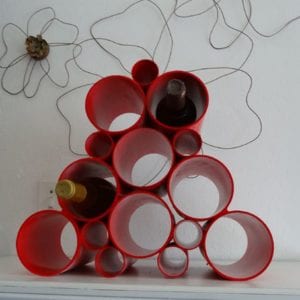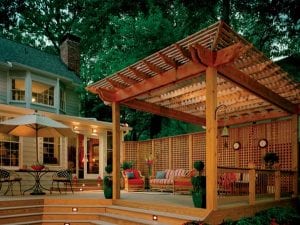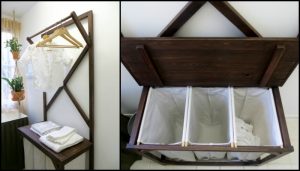Last Updated on March 5, 2024 by teamobn
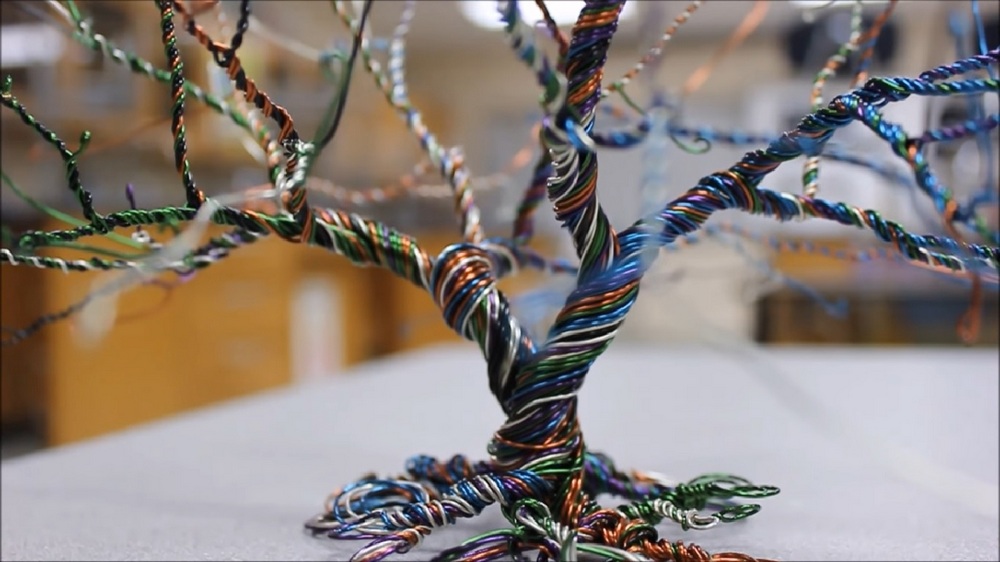
There are a wide variety of home decorations available for purchase, both online and in brick-and-mortar stores. These pieces can be very eye-catching, and it can be easy to impulsively buy things we don’t really need. This is often due to our obsession with centerpieces.
While it’s fun to browse and purchase home decor, it’s important to be mindful of our spending. There’s no need to break the bank in order to have a beautiful home. Instead, we can be creative and resourceful. For example, we can DIY some of our decors, or shop at thrift stores for unique finds.

My friend once asked me to try doing centrepieces by myself so that I could save money. I was hesitant at first because I wasn’t creative enough. But she insisted that there are so many DIY projects out there. Some do not require a high level of creativity, only patience. I considered the idea and looked for easy ones.
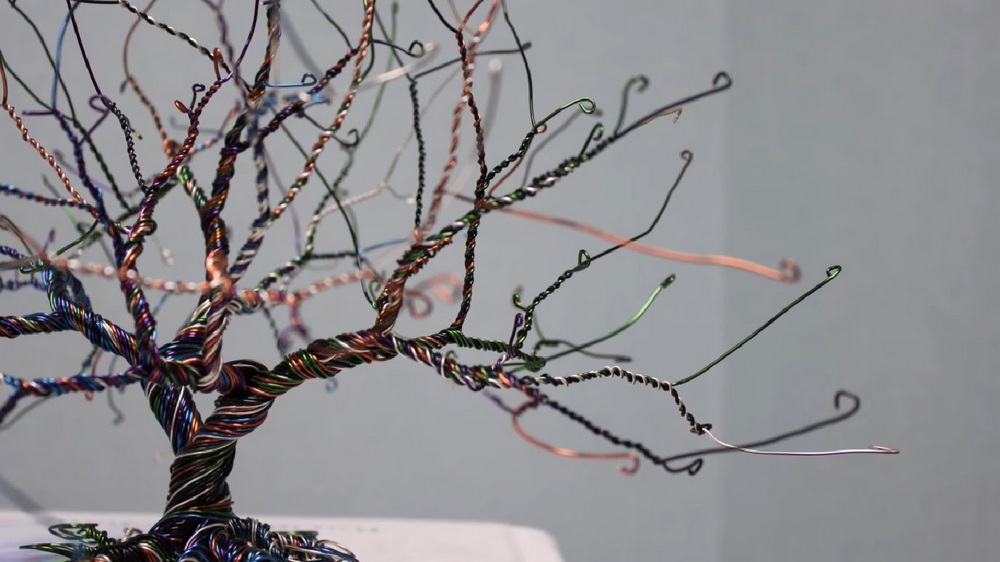
Whether you’re preparing for a casual weekend brunch or a formal soiree, adding some DIY centrepieces like this wire tree to your spread is sure to elevate your venue and setting. Your guests will appreciate that you put a little extra effort into the gathering, and you’ll have meaningful pieces of décor like this wire tree to set the tone for the whole event.
When I saw this DIY Wire Tree, I instantly decided to try it out. Admittedly, I got hooked that I made four instead of just two. It’s one of the prettiest (and cheapest) centrepieces. You have to try it yourself, too!
A wire tree is becoming popular nowadays for its minimalist look and modern appeal. While some may find the sparse look of a wire tree to be cold and uninviting, others appreciate the clean lines and geometric shapes that these trees boast. Whatever your opinion may be, there’s no denying that wire trees are becoming increasingly popular in homes and office spaces across the globe.
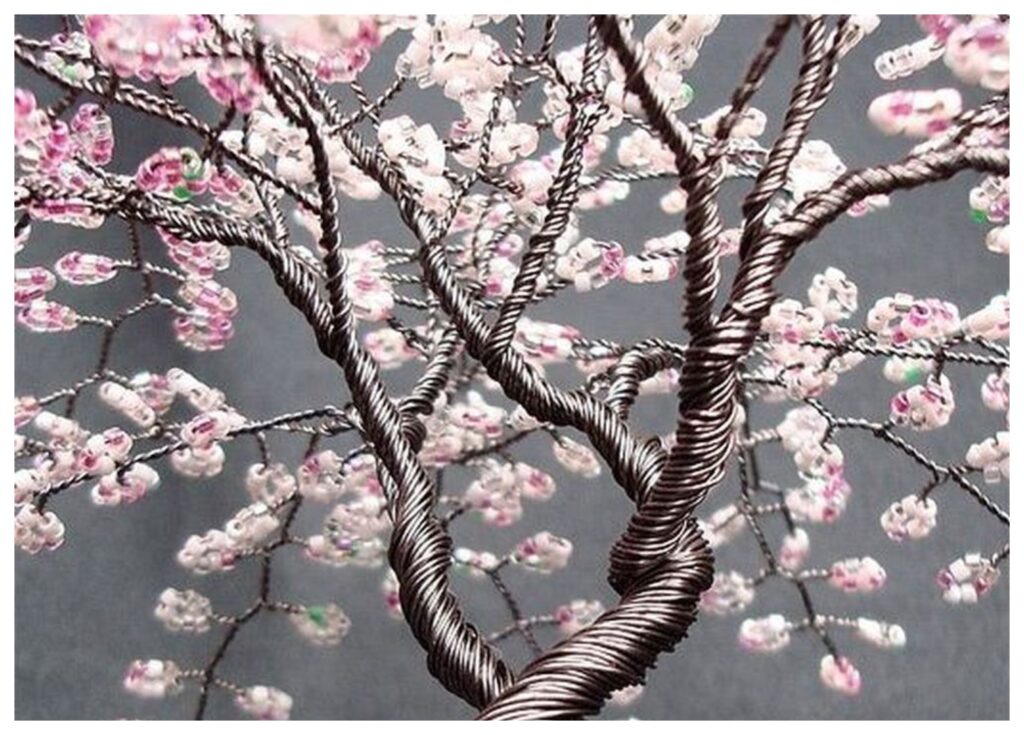
A wire tree is easy to make, requires no water or sunlight and can be customized to fit any space. Wire trees are also a great way to add a bit of uniqueness to your home without the hassle of caring for a live plant. If you’re looking for a unique and stylish way to spruce up your home, a wire tree may be the perfect solution.
Working with wire to create a wire tree can be challenging for those who are not used to it, but the results can be very satisfying. This type of project can be time-consuming, but it is well worth the effort. These artificial trees make beautiful decorations for the home or office, and they also make great gifts. If you take your time and follow some simple tips, you can create a beautiful wire tree that will last for years.
You can even add colourful beads or decorate gems to make your wire tree more beautiful. By doing this, you’ll add an extra layer of dimension and texture that will really make your tree stand out. Not to mention, it’ll be a fun and creative way to show off your personal style.
What are you waiting for? Grab some wires and twist wires. 🙂
Contents
Making a Wire Tree
Material
- 6 rolls of bead wire
Tool
- Wire cutter
Instructions
Step 1: Prepare Your Wire
- Start by unrolling a portion of your bead wire from each roll. Depending on the size of the tree you want to create, you may need to adjust the length of the wire you use. A good starting length is about 30 cm (approximately 12 inches) for each piece of wire.
Step 2: Cut and Group the Wire
- Using your wire cutter, cut at least 50 strands of wire to your chosen length. The more strands you use, the denser your tree’s foliage will be.
- Once cut, gather your wires into bundles of 10. These bundles will form the branches of your wire tree.
Step 3: Twist the Trunk
- Take all the bundles and hold them together in one hand. Begin to twist them together tightly starting from the middle to create the trunk of your tree. Leave enough untwisted wire at both ends for the roots and branches.
Step 4: Form the Roots
- Separate the wires at one end of the trunk into smaller groups to create the roots. Twist each group to form individual roots. Spread them out in different directions to mimic the natural look of tree roots. The extent to which you twist the roots depends on your personal preference for the tree’s appearance.
Step 5: Create the Branches
- At the other end of the trunk, separate the remaining untwisted wires into smaller bundles to form branches. You can vary the number of wires in each bundle to create branches of different thicknesses.
- Twist each bundle to form individual branches. For added realism, allow some branches to fork by splitting a bundle into two and twisting them separately.
Step 6: Detail the Branches and Foliage
- For a more detailed tree, divide the ends of the branches into even smaller strands to form twigs. You can also curl or bend the ends of the wires to mimic the natural growth patterns of tree branches.
Step 7: Shape and Adjust
- Once all the roots and branches are twisted, adjust the shape of your tree. Bend the branches and roots to create a natural, spreading look. This is where you can really personalize your tree, adjusting its shape to your liking.
Step 8: Finishing Touches
- Review your wire tree for any adjustments. You might want to trim any excessively long roots or branches with your wire cutter to maintain proportion and balance.
Step 9: Display Your Wire Tree
- Your wire tree is now complete and ready to be displayed. Choose a prominent place in your home where it can be admired. The tree can stand on its own, or you can secure it to a base for extra stability.
You can also catch a visual instruction on twisting the wires to make your tree here:
Types of Wire for Crafting Trees
Crafting wire trees is an art form that blends creativity with technique, resulting in stunning pieces of decor that can enhance any space. The choice of wire is crucial, as different types of wire offer varying degrees of flexibility, strength, and aesthetic appeal. Below, we explore the types of wire best suited for crafting these intricate trees, each offering unique properties that can affect the outcome of your project.
Copper Wire
- Overview: Copper wire is a top choice for crafting wire trees due to its perfect balance of flexibility and strength. Its natural beauty and ease of manipulation make it ideal for forming intricate branches and roots, allowing for detailed and delicate designs.
- Properties: Copper wire is available in a wide range of gauges, offering versatility in crafting. Thinner gauges are more pliable and suited for fine details, while thicker gauges provide structural integrity. Over time, copper wire may develop a patina, adding a unique, rustic charm to the wire tree that many enthusiasts appreciate.
Aluminum Wire
- Overview: Aluminum wire stands out for its lightweight nature and ease of use, making it an excellent option for beginners in wire tree crafting. Its softness reduces hand strain during the crafting process, facilitating the creation of complex designs with less effort.
- Properties: One of the key advantages of aluminum wire is its resistance to corrosion, ensuring the long-lasting beauty of the wire tree. It is also available in a variety of colors, offering a broad palette for creative expression. This allows for more vibrant and diverse wire tree designs, from naturalistic to whimsical.
Stainless Steel Wire
- Overview: For crafters aiming for durability and a sleek, modern aesthetic, stainless steel wire is unmatched. It is ideal for larger wire trees that require more structural support, thanks to its strength and rigidity.
- Properties: Stainless steel wire excels in maintaining its shape and resisting wear, including tarnishing and rusting. This makes it a reliable choice for wire trees intended as long-term displays. However, its stiffness presents a challenge, necessitating the use of tools and greater effort to manipulate. The result is a wire tree with a contemporary feel and robust structure, capable of withstanding the test of time.
Brass Wire
- Overview: Brass wire, a blend of copper and zinc, stands out for its unique color and finish, offering a warmer alternative to pure copper wire. While it is harder than copper, brass wire retains enough flexibility to craft detailed and intricate wire trees, making it a preferred choice for those looking to add an elegant flair to their creations.
- Properties: The distinctive golden hue of brass wire lends an exquisite touch to wire tree sculptures, imbuing them with a sense of elegance and warmth. Over time, brass wire, much like copper, may develop a patina, a feature that many crafters value for achieving an antique or vintage look in their wire trees. This evolving appearance can add depth and character to the sculptures, making each wire tree a unique piece of art.
Galvanized Steel Wire
- Overview: Galvanized steel wire, known for its steel core coated with a protective zinc layer, is a budget-friendly option that does not compromise on strength or durability. It’s particularly well-suited for crafting wire trees intended for outdoor display or environments prone to moisture, thanks to its inherent resistance to rusting.
- Properties: Though more rigid and tougher to manipulate than softer metals like copper or aluminum, the durability and corrosion resistance of galvanized steel wire make it an excellent choice for wire trees that require longevity and resilience. Its sturdy nature supports the creation of larger, more ambitious wire tree sculptures that stand the test of time and elements, making it a versatile option for both indoor and outdoor settings.
Nickel Silver Wire
- Overview: Nickel silver wire, misleadingly named as it contains no actual silver, is an alloy of nickel, copper, and zinc that offers a bright, silvery finish. This material does not tarnish easily, making it a fantastic choice for those seeking the luster of silver without the maintenance. The reflective quality of nickel silver wire adds a contemporary and sophisticated touch to wire tree sculptures, enhancing their visual appeal.
- Properties: Nickel silver wire is known for being harder and more springy than copper, which can provide a sturdy base for wire trees. This resilience makes it suitable for creating wire tree sculptures that demand structural integrity without sacrificing the aesthetic quality. The shiny, reflective surface of nickel silver wire catches the light beautifully, making wire trees crafted from this material stand out as striking pieces of art.
Choosing the Right Wire
Selecting the right wire for your wire tree project depends on various factors, including the desired look, the size of the tree, and your level of expertise. Beginners might prefer the ease of working with aluminum or copper, while more experienced crafters might explore the durability and unique finishes of stainless steel or brass wire. Experimenting with different types of wire can also lead to discovering new techniques and styles, enhancing the creativity and enjoyment of crafting wire trees.
Click on any image to start the lightbox display. Use your Esc key to close the lightbox.


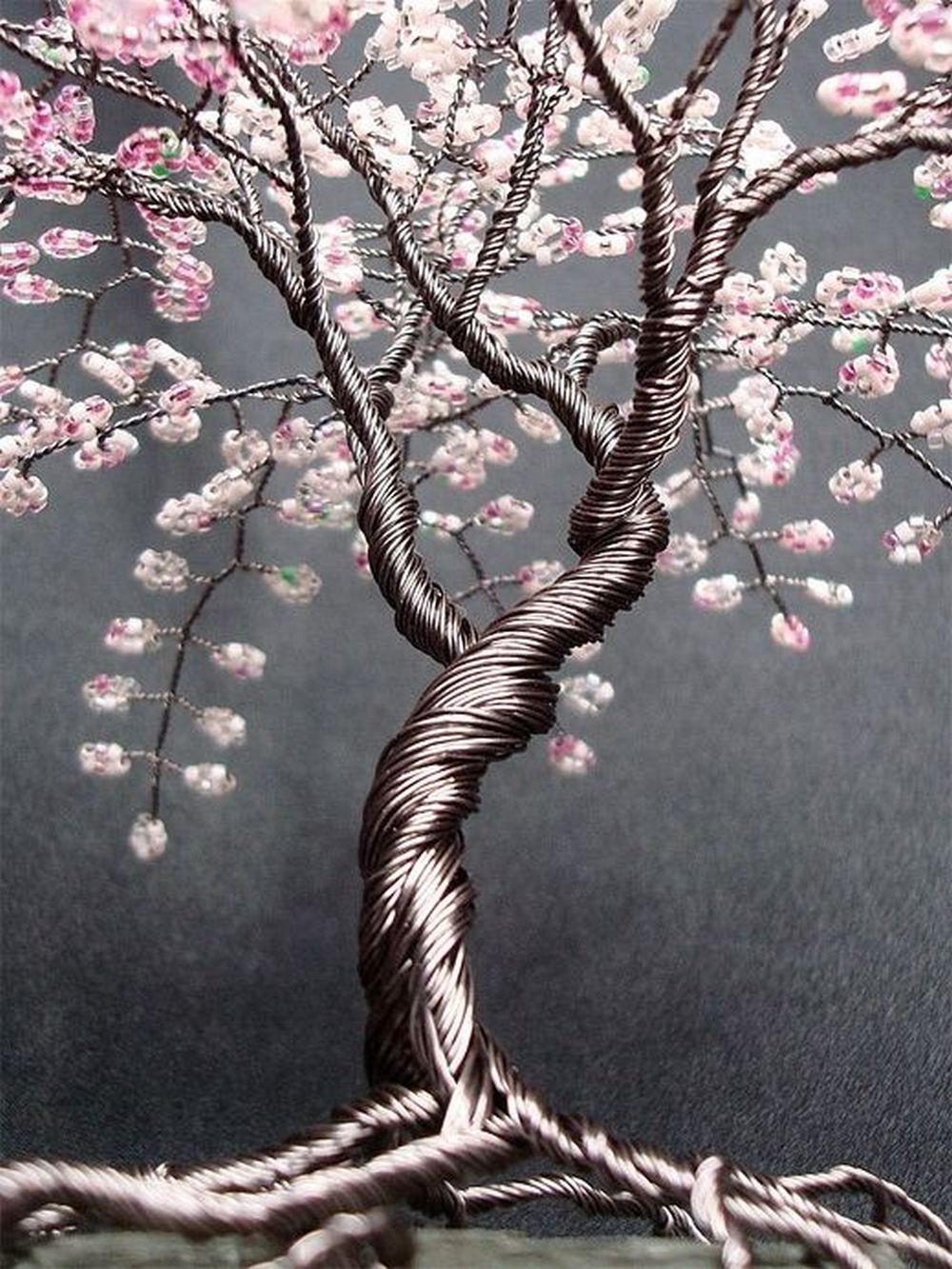
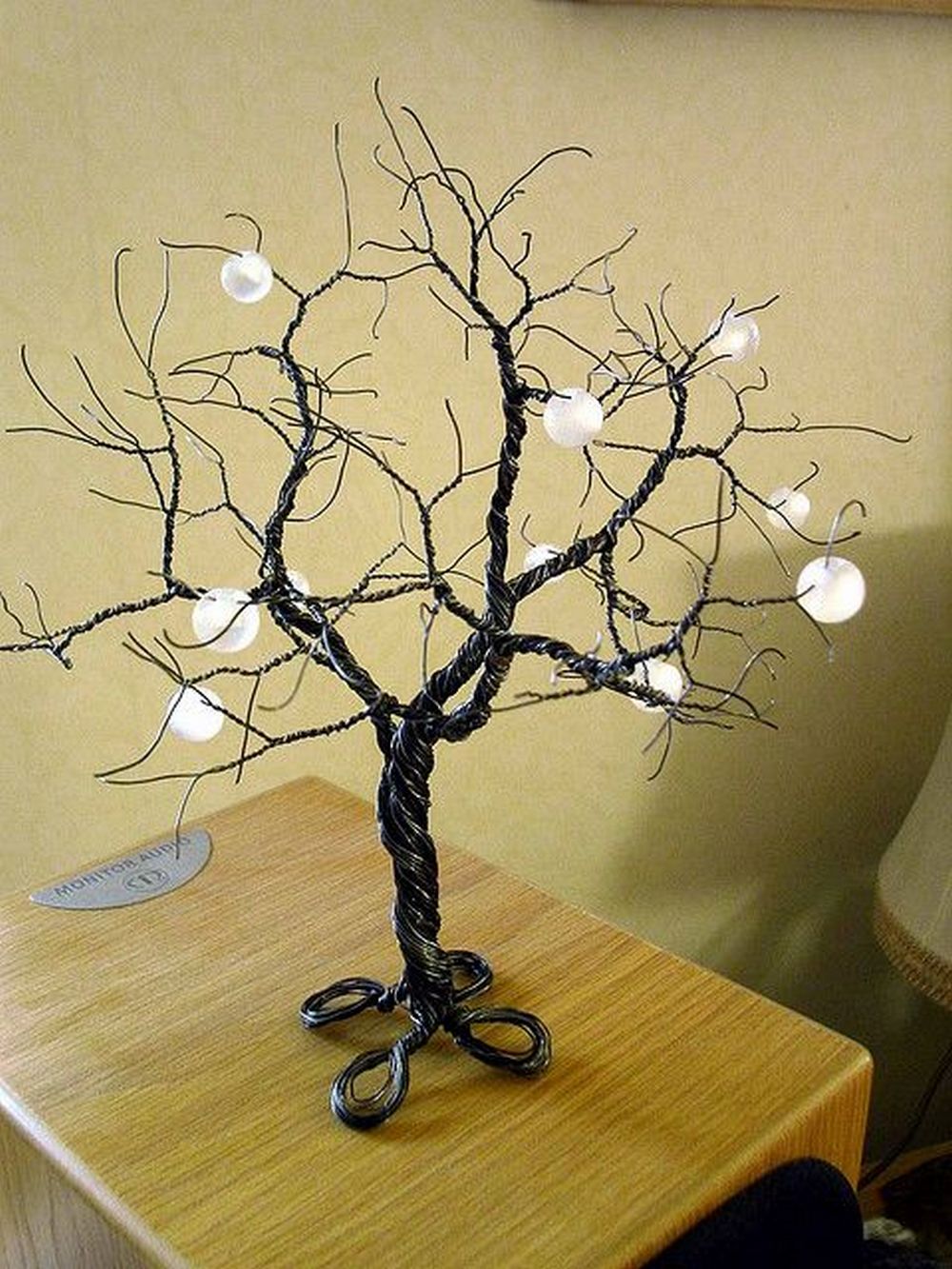
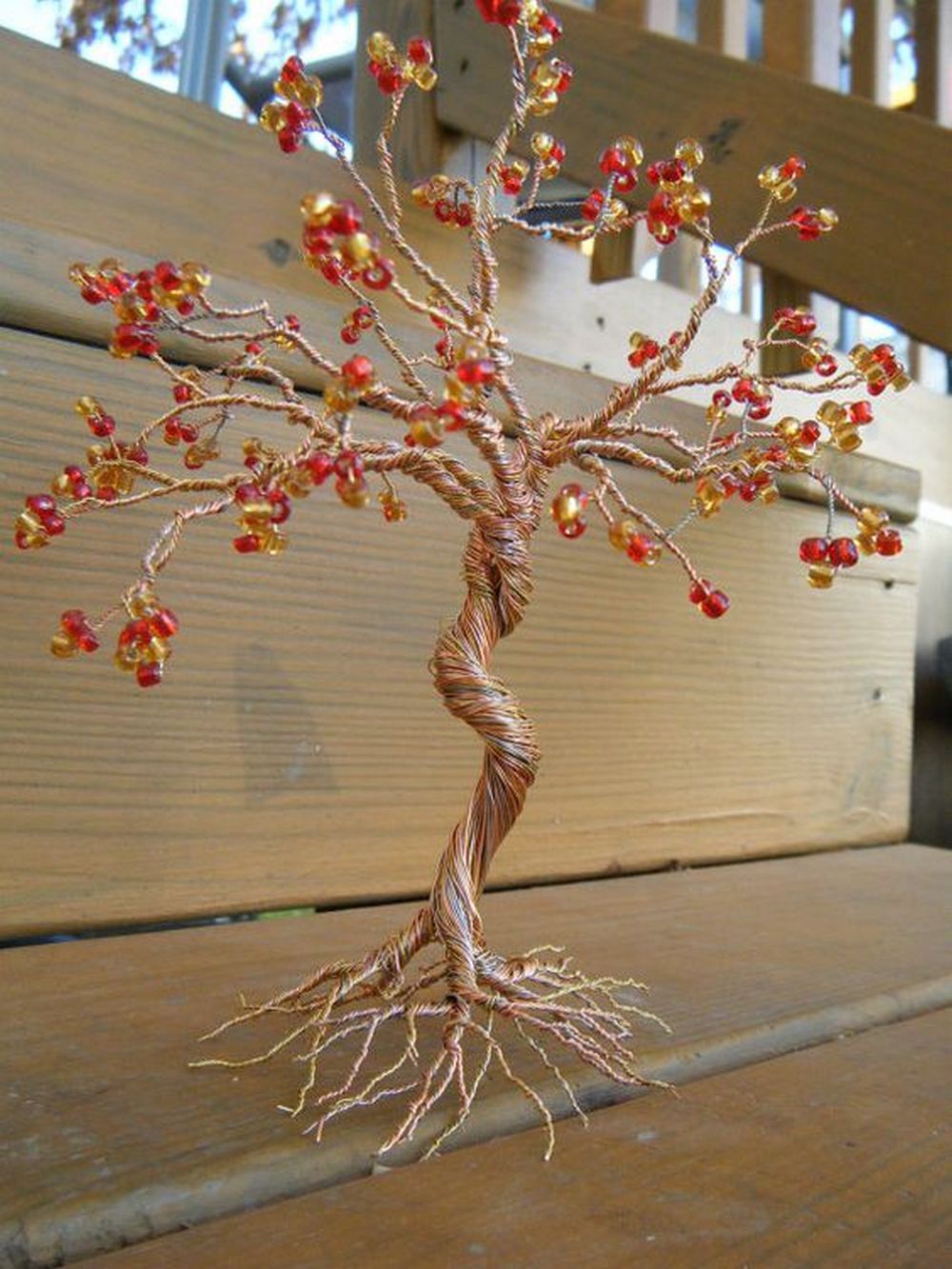
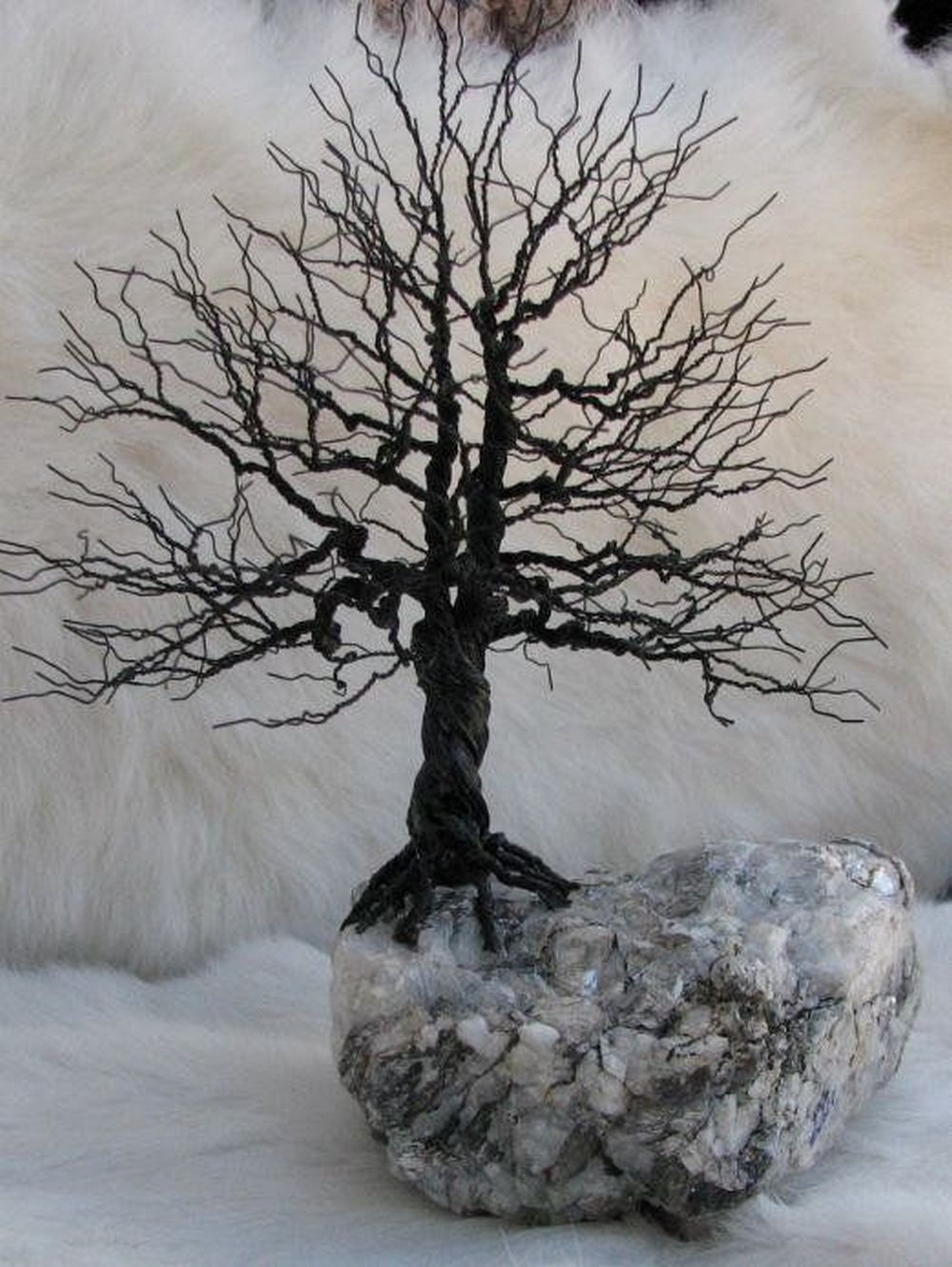
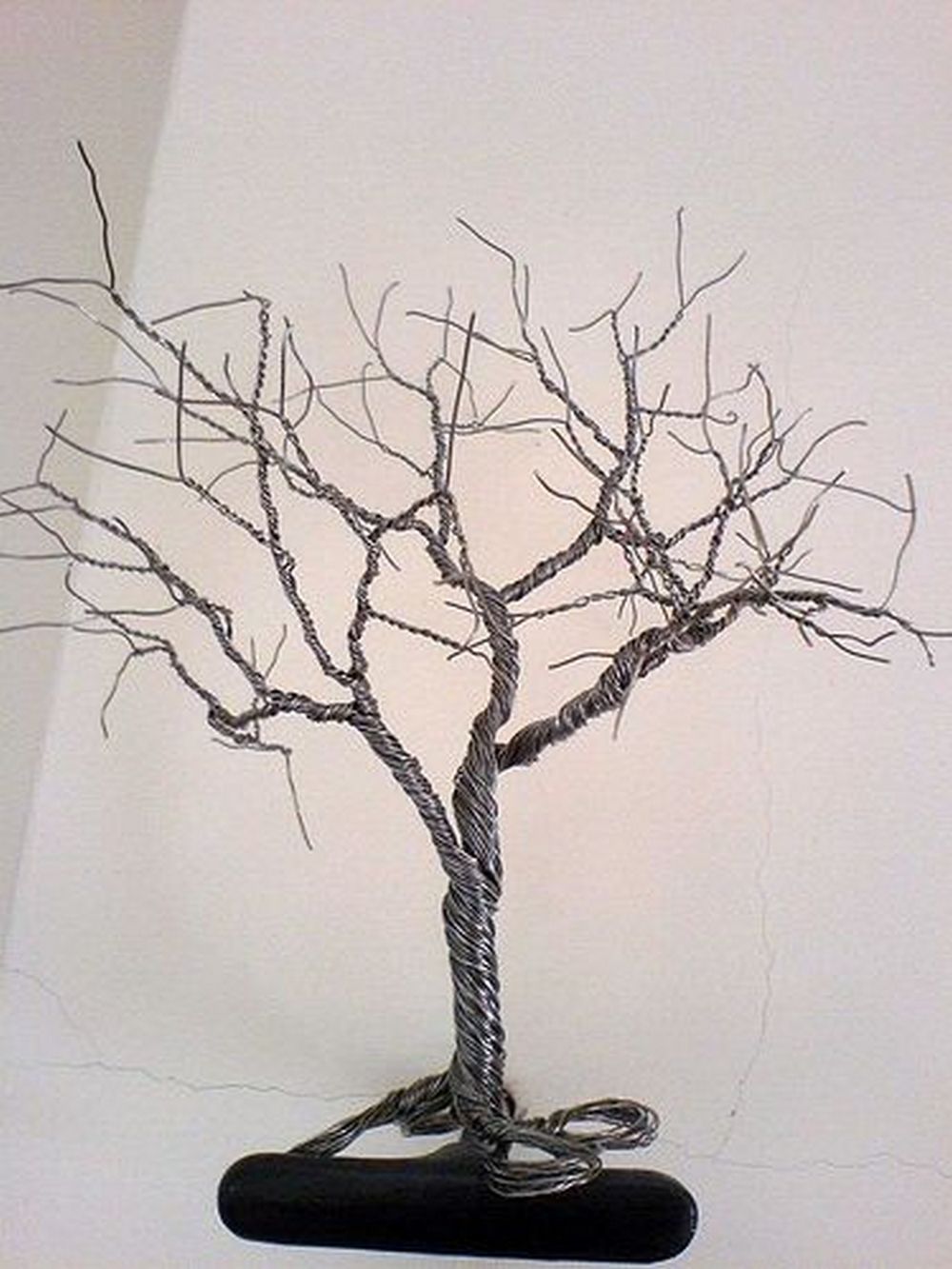
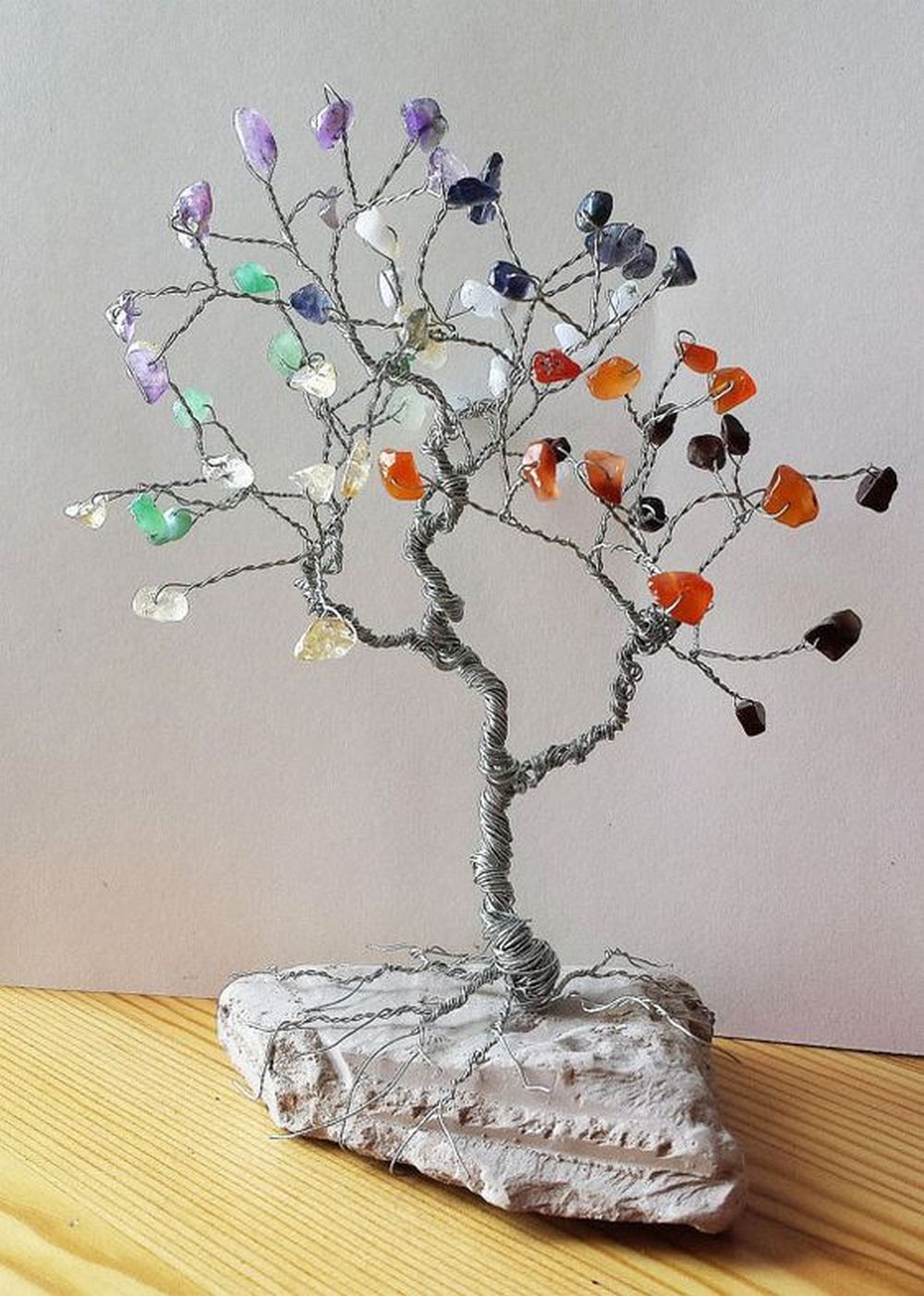
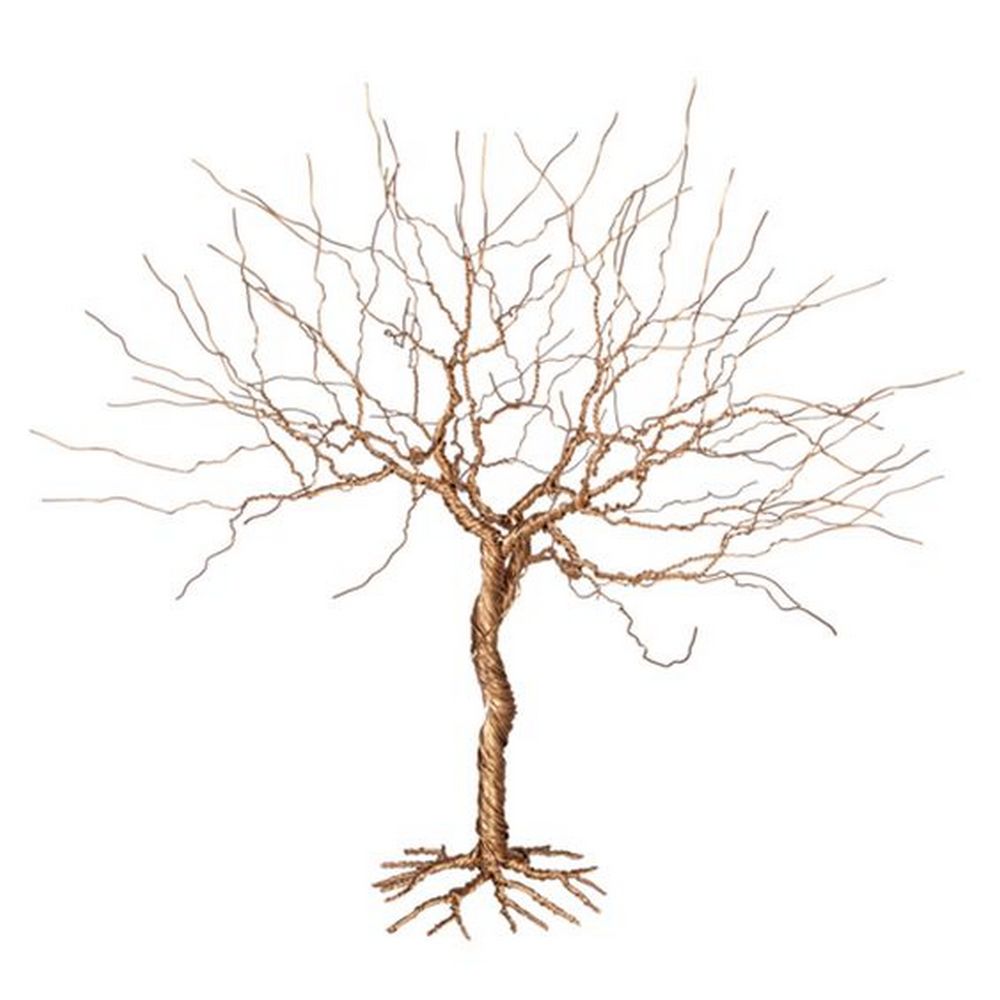
Incorporating Wire Trees into Home Decor
Incorporating wire trees into home decor offers a unique opportunity to blend artistry with nature, creating spaces that feel both personalized and inspired. These sculptures, with their intricate details and varying materials, can complement a wide range of interior styles, from rustic to modern. Whether you’re a seasoned crafter or new to the concept of wire trees, integrating these pieces into your home can add an unexpected and striking visual element.
Living Room
The living room serves as the heart of the home, a central space where families gather and guests are entertained. In this setting, a larger wire tree can serve as a captivating focal point. Placing it on a prominent surface, such as a coffee table or sideboard, allows it to catch the light and attract attention.
The intricate details and shimmer of the wire can add a touch of sophistication to the room. When selecting a wire tree for the living room, consider the existing color scheme and metallic accents to ensure a harmonious integration. A wire tree with a finish that echoes other metallic elements in the room creates a cohesive and balanced look, seamlessly blending with the room’s overall aesthetic.
Bedroom
Bedrooms are sanctuaries of rest and relaxation, and the decor should contribute to a peaceful and calming environment. Smaller wire trees are particularly suited to this intimate space, offering a serene and thoughtful presence when placed on nightstands or dressers.
Opting for wire trees with soft metallic tones, such as brushed silver or warm copper, can complement the tranquil atmosphere of a bedroom. These subtle accents can enhance the room’s ambiance without overwhelming the senses, perfect for creating a restful retreat.
Entryway
The entryway is your home’s introduction, setting the tone for the rest of the interior. A well-placed wire tree on a console table can make a striking first impression, showcasing your unique style and flair for creative decor.
Choose a wire tree that reflects the overall aesthetic of your home, whether it’s elegant and sophisticated or bold and contemporary. This thoughtful addition can welcome guests with a sense of warmth and creativity, making your entryway memorable and inviting.
Modern and Minimalist
For homes adorned in modern or minimalist styles, wire trees can add visual interest without cluttering the space. Wire trees crafted from stainless steel or nickel silver, known for their sleek and contemporary look, are particularly fitting. The clean lines and metallic sheen of these materials complement the minimalist aesthetic, offering a subtle yet striking decorative element. These wire trees can serve as standalone art pieces or be grouped for a more dramatic effect, enhancing the modernity of the space with their elegant simplicity.
Rustic and Farmhouse
Brass or copper wire trees, especially those with a patina, harmonize beautifully with rustic or farmhouse decor. Their warm tones and natural theme add character to the cozy, lived-in feel of these styles.
Eclectic and Bohemian
Eclectic or bohemian interiors, which celebrate a mix of colors, patterns, and textures, can be enhanced by colorful aluminum wire trees. These pieces can serve as vibrant accents within a diverse and layered decor scheme.
On Bookshelves
Wire trees can add visual interest to bookshelves, nestled among books and other decorative items. They provide a sculptural element that breaks up the linearity of books, offering a dynamic and engaging display.
As Part of a Gallery Wall
Consider including a wire tree in a gallery wall arrangement. Mounted on a stand or in a shadow box, it can add depth and texture to a collection of flat artworks, making the overall display more intriguing.
In Themed Decor
Wire trees can also play a thematic role in your decor. For instance, a wire tree with a seasonal decoration can celebrate the changing seasons or holidays, adding a festive touch to your home.
Incorporating wire trees into your home decor not only showcases your appreciation for handcrafted art but also brings a piece of the natural world indoors. With their versatility and striking presence, wire trees can enhance the beauty and personality of any space, making them a worthwhile addition to your decorative repertoire.
Conclusion
Crafting a wire tree is a rewarding endeavor that merges creativity with the elegance of nature-inspired art. These sculptures not only enhance home decor with their intricate beauty but also offer a therapeutic process of creation, providing a mindful escape for crafters. The versatility and durability of wire trees make them a cherished addition to any space, embodying both personal expression and timeless appeal.

